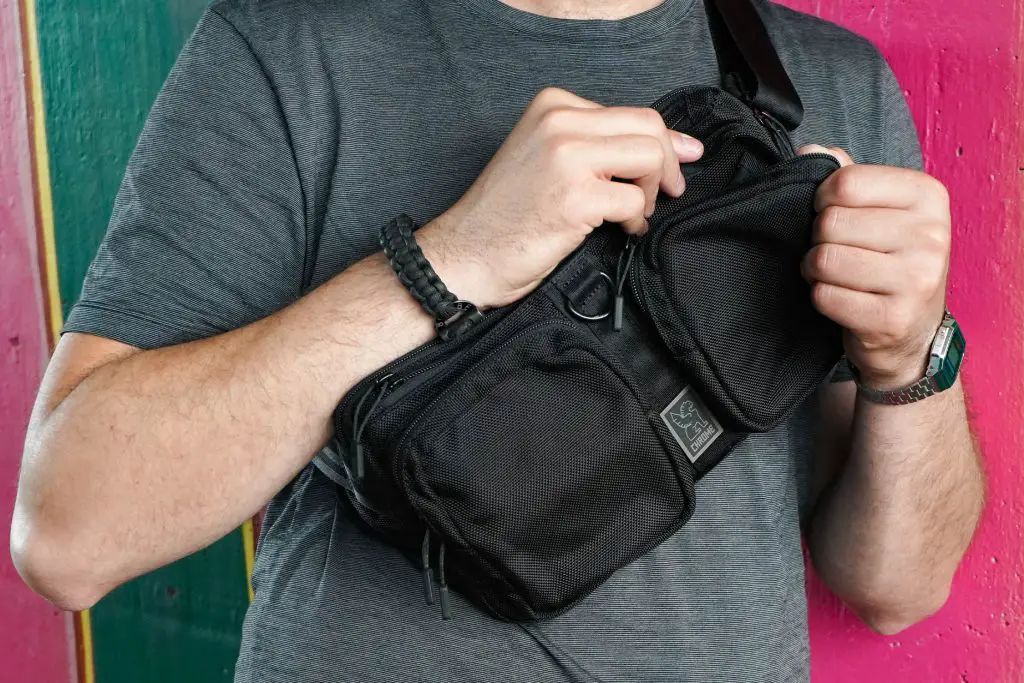Backpacks can, ironically, cause quite a bit of back and neck pain if worn improperly, and there’s a plethora of things that contribute to how much you’ll hurt if you don’t know how to pick one, how to wear one, and what items you should carry in one.
While it might sound easy, even choosing the right sling bag is not an easy task, let alone wearing it properly. Most people simply tend to pack the items they need, solely thinking about whether the bag will manage to survive and not rip due to excess weight, completely ignoring the fact that how you wear your sling bag will affect how much pain you’ll have to endure.
We’re here to discuss and explain whether sling backpacks are bad for your back, why, and in which situations.
Are sling backpacks bad for your back?
Essentially, sling backpacks are not that much different from regular backpacks – if you wear them properly if you don’t overburden yourself with too much weight, and if you wear them properly, you’re most likely to avoid any back and neck pain.
That being said, we can already see three potential mistakes, including poor wearing method, poor item choice, and bad model choice. Let’s see how each of these affect the intensity and severity of pain a person could face:
Choosing the wrong bag
Simply put, if you don’t pick the right bag for the right situation, you are bound to feel a certain amount of pain; whether it’s slight discomfort or excruciating pain that was building up over time, it mainly depends on the backpack you are using.
For example, there are people who may think that sling backpacks can be used as ‘general-carry’ backpacks; the compact size of a sling bag might make you think it’s the perfect choice for carrying smaller items on your trip down to the airport, office, or for commuting. However, sling backpacks aren’t meant for carrying laptops, tools, and small-but-heavy things.
On another hand, if you don’t want to puncture your spine and wreck your kidneys, you might want to consider a padded sling bag.
In conclusion, picking a suitable bag for each case and scenario will ensure that you don’t feel any back pain (from wearing a backpack, at least).
Wearing it on the back

The next factor is the ‘wearing method’ or ‘wearing position’. Obviously, most people associate back pain with ‘wearing a bag on the back’, and in most cases this is absolutely true. The bag itself weighs a certain amount of ounces or pounds, the items you carry, even if you are packing light aren’t weightless; consequentially, the weigh you carry puts some pressure on your back and neck.
Furthermore, the basic laws of physics and biology helped us understand that our back (more specifically, our spine) even initially withstands quite a bit of pressure even when we’re carrying nothing more than ourselves alone.
However, sling bags are certainly lighter than standard backpacks. Their smaller size prevents you from overstuffing them with too many items, so in that regard, it’s safe to say that in the worst case scenario you’ll just ruin your posture a bit.
Wearing it on the front

Just like we’ve mentioned wearing any kind of bag affects your back, spine, and neck. The weight you are carrying determines the intensity of the ‘pull’. Wearing your sling bag on the front will simply shift the ‘direction’ of the pull, but it doesn’t instantly eliminate the risk factor altogether.
In fact, wearing your sling backpack front might ruin your posture even more, which will in turn cause even bigger back problems. Most people tend to lean forward as they walk simply due to the force of gravity. Unless you’re carrying nothing but ultra-light items, such as ID, your wallet, and some papers, you’re bound to put even more pressure on your back instead of relieving it from it.
Wearing it on the waist
Wearing a sling bag on the wrist is the easiest way to alleviate your back pain. By shifting the weight from your spine on your legs (knees specifically), you will be able to distribute the weight more evenly.
It might seem that you’re carrying an insignificant amount of weight, but every ounce matters by a long shot.
Padded versus non-padded sling bags
Even completely blunt items can feel ‘sharp’ if the bag isn’t padded; we all remember ‘feeling’ the pointy edges of schoolbooks and rulers when we were walking to school when we were younger, so the same applies when carrying a sling bag.
Padded backpacks, regardless of type, are always better than non-padded ones. Padded straps eliminate the discomfort in the shoulder area while interior padding absorbs the protruding impact of pointy objects touching our back.
Bag’s weight
The last thing you should keep in mind is the weight of the bag itself. Of course, there are dozens of factors that contribute here as well, such as the bag’s size and material for example. The heavier the bag is, the higher the risk of hurting your back is.
Frequently Asked Questions
Are sling backpacks bad for your spine and posture?
It all depends on what items you are carrying, how much weight you are carrying, and the position you are carrying your sling bag in. Essentially, they aren’t bad for spine and posture, but they aren’t too great for our shoulders and neck.
What’s the best position to carry a sling bag?
Generally speaking, carrying a sling back at the waist is the ideal position in order to avoid the one-sided strain you’d otherwise experience if you carried them on your back or front.
Are sling bags light?
In comparison to typical and ‘average’ backpacks, sling bags are practically weightless.
Are sling backpacks safe for everyday wear?
As long as you adhere to the general advice we’ve talked about (carrying position, item choice, total weight), sling bags are perfectly safe for everyday wear.
Leave a Reply